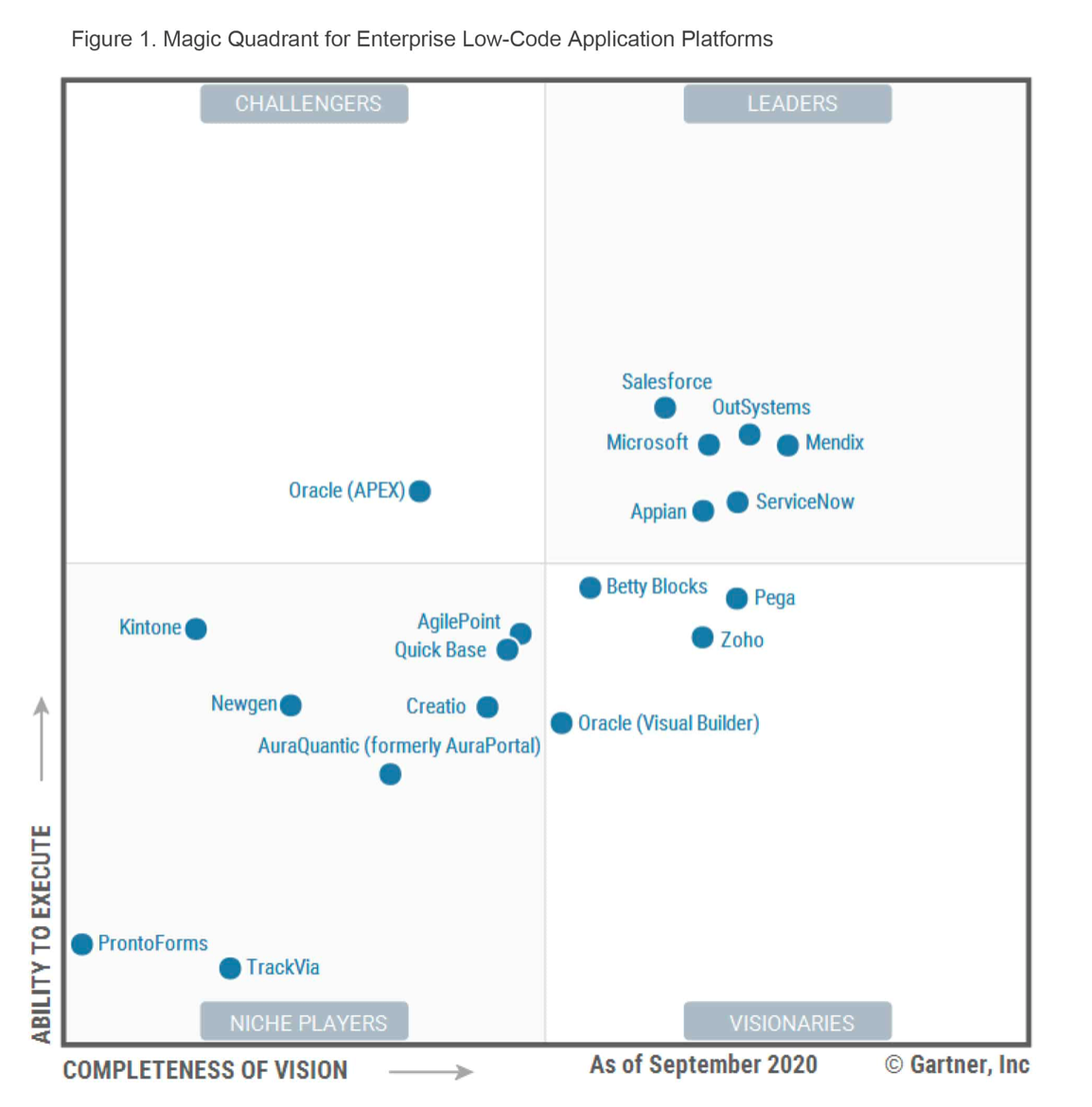Businesses are increasingly looking for ways to shorten development timelines, increase productivity with less demand on developer skillsets. Low Code Application Programming (LCAP) tries to address the need.
In a nutshell, LCAP is a software development approach that requires little to no coding in order to build applications and processes. A low-code development platform uses visual interfaces with simple logic and drag-and-drop features instead of extensive coding languages. These intuitive tools allow users with no formal knowledge of coding or software development to create mobile apps, web services and backend systems.
In a recent study, Gartner took a closer look at leading enterprise LCAPs supporting enterprise-class applications. Enterprise-class applications require high performance, scalability, high availability (HA), disaster recovery (DR), security, service-level agreements (SLAs), resource use tracking, technical support from the provider, and API access to and from local and cloud services.

Gartner ranks LCAP leaders as those that are demonstrating both execution (technically good product matched to good sales performance) and vision (both product innovation and commensurate marketing strategy). LCAP Leaders include major cloud SaaS providers (Microsoft, Salesforce, ServiceNow), specialist low-code providers (OutSystems, Mendix) and a hybrid process automation and low-code application vendor (Appian). These vendors have strong multifunction capabilities including application process, business logic and user experience, and moderate to strong ecosystems.
From our own point of view as practitioners at dots&bits, there are a few other aspects to consider when looking at low-code alternatives:
- Webapps generated with low-code can't really match native apps. Webapps usually fall short when it comes to visual styling, smoothness & performance, ease of access to native phone functionality or readiness of third-party API integrations. However, for B2B applications with lower complexity these shortcomings might be less relevant. On the other hand, LCAP provides a lot of benefits for backend functionality.
- Expertise in designing the technical architecture or in the process of writing well structured code still play an important role. Thus, the experience and technical knowledge of low-code developers remains relevant. Also, in order to truly realise the benefits of low-code, one needs to find a way of using it to build on pre-existing code resources. Sometimes it’s as simple as an API integration or ensuring that the high-code activity can talk to the low-code software platform.
- Licensing fees need to be accounted for when looking at total cost. Thus, depending on the use case and the targeted number of users, a low-code platform might be too expensive.
- Lastly, should the moment ever come, it might be difficult to move away from a low-code implementation. Judging by the current situation, although the code base can be exported, it is very difficult for developers to work with that code.
If you are interested in exploring low-code alternatives, talk to us at dots&bits.
Source: dots&bits










